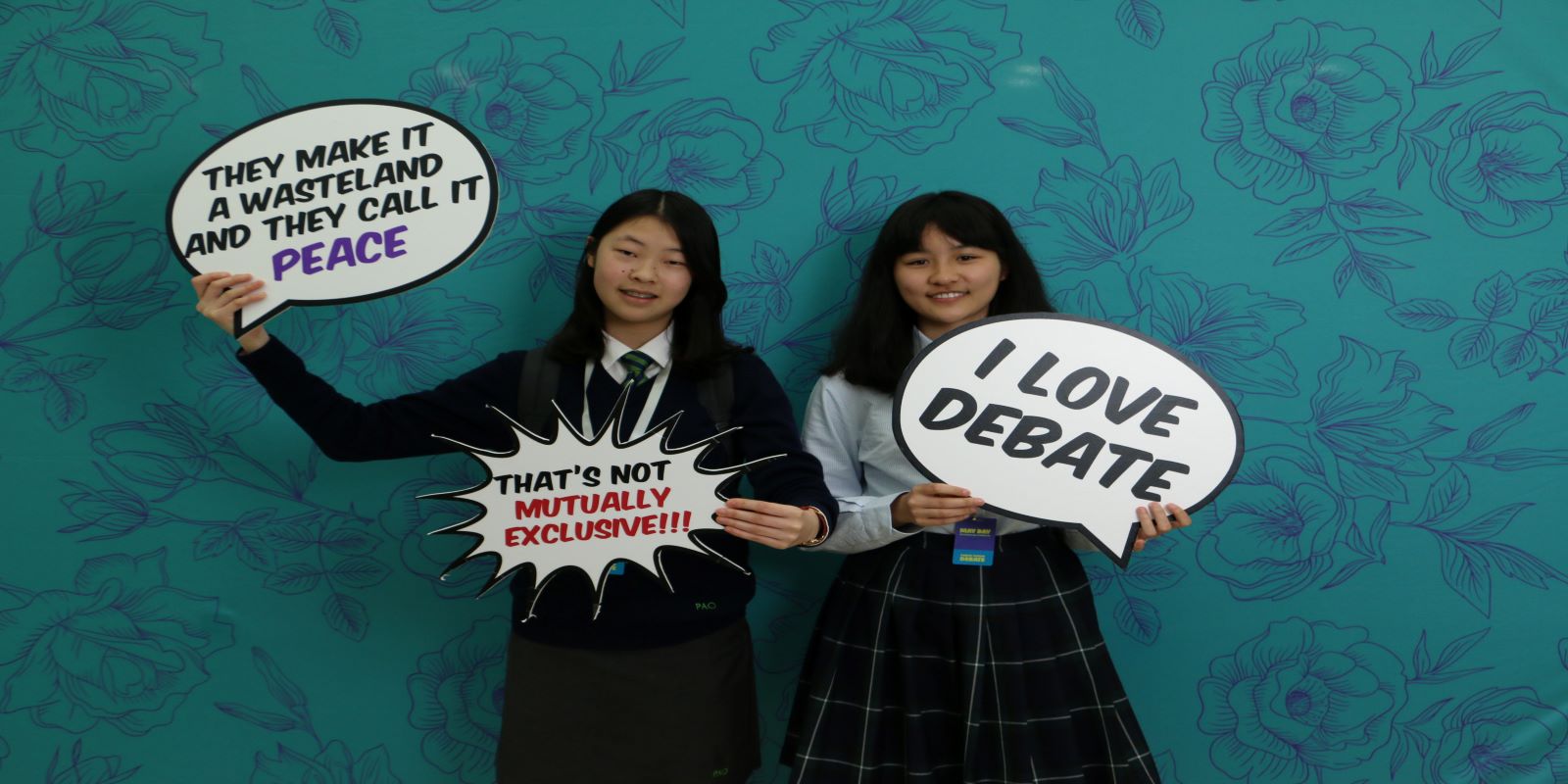Introduction to World Schools Debate (Part 2)

Let’s head over part two of this article. In the first one, you had the chance to learn the basics of the World Schools debate format. Now that you know how your teams are formed and what the motions are, let’s get ready to start the debate! In World Schools debate format, there are eight speeches; four from each team. We can group these into five different types of speaker roles, so let's examine each of them according to their speaking order in the debate. Note that the Proposition always speaks first.
First is First Prop, also referred to as the Prime Minister (or “PM”). They have two main responsibilities – first, to define the motion and lay out the details of the team’s plan to enact the motion. For example, on the motion “This House would allow students to fire their teachers,” the Prime Minister should explain the exact mechanism for how students will be able to do this. This might sound like: “Middle school students and above will hold an anonymous vote at the end of every school year, and if 90% of students vote to fire a teacher, they will immediately have to resign.” The second thing the speaker needs to do is to provide two to three arguments supporting the motion.
Next is First Opp, also referred to as Leader of the Opposition. Their role is to first outline the Opposition’s main arguments and then rebut the arguments made by the First Prop. Next, they should provide two to three arguments against the motion. In some cases, this speaker will also need to challenge the definitions and mechanism provided by First Prop, but that’s only in rare cases that we won’t discuss at this time.
The next speaker will be Second Prop, followed by Second Opp. Their role is similar, and it includes three main things: first, rebuttal to the previous speaker, second, rebuilding of their team’s points that were rebutted by the previous speaker, and third, providing any additional new arguments or an extension of an argument for their side on the motion.
After the second speakers on each team speak, next is Third Prop and then Third Opp. These are the summary speakers for each team, and their role is to explain how and why their team is winning the debate. This is done by identifying the main “clash points” (in other words, areas of disagreement) in the debate and by summarizing the main arguments and rebuttals. They are allowed and encouraged to add additional rebuttal points, but no new arguments.
Now here comes something unusual – after the Third Opp speaker, the next speech is from the Fourth Opp speaker. No, this is not a mistake. There are two Opp speakers who deliver their speeches one after the other, making the last speech in the debate the Fourth Prop speech. This is so the Proposition has the chance to give a final reply. This is also why the final speech on each team is called the reply speech. You are not allowed to add new arguments or rebuttals in this speech, only a brief review of the main points explaining how you think the judge should view the round and why your team has already won. Think of this speech as if you were supposed to give a biased adjudication in favor of your team. The reply speech is delivered by either the first or the second speaker on each team.
All speeches are eight minutes long, except for the reply, which is four minutes. In some competitions, the speaking time may be reduced to six minutes, with the reply limited to three minutes.
Now, eight minutes might sound like a lot of time for one speech, but here comes another cool thing about World Schools debate – points of information (often just called “POIs”). POIs are questions that any speaker on one team can offer to any speaker from the other team during their speech. These questions are an opportunity for engagement between the teams, and while you can decide when to accept a question, you’re expected to accept at least one question during your speech. Questions can be offered between the second and the seventh minute of a speech, because the first and the last minute are protected from questions. Also, no questions are allowed during the reply speeches.
At the end of the round, the judge will fill out a ballot and assess each speaker’s performance based on their content, style, and strategy, and decide the winning team.
And there you have it – now that you know the World Schools Debate format, you are ready to participate in your first parliamentary debate! Even if you don’t become a world champion, participating in the World Schools format can be the start of an exciting journey in international speech and debate. Feeling confident to start debating in World Schools format? Join the World Schools Debating League today!

